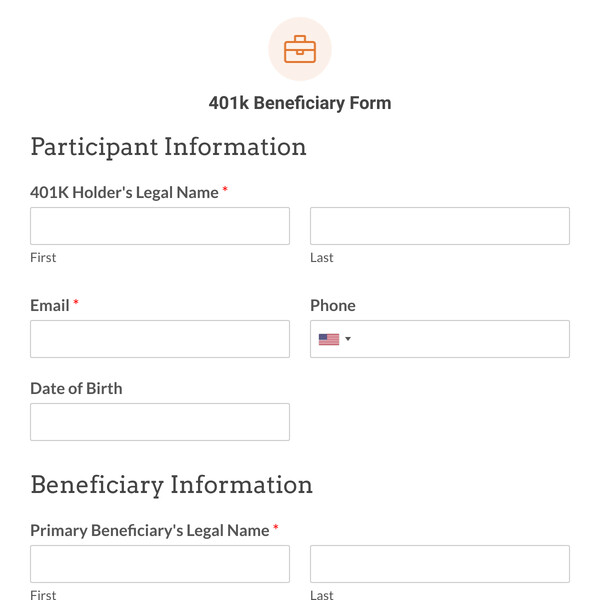17 Business Registration Form Templates
Online Event Registration Form
Use the online event registration form template to register attendees for your event.
Meeting Room Registration Form
Use the meeting room registration form template to simplify the process of reserving meeting rooms.
Conference Registration Form
Collect attendee information to plan and manage your next conference event perfectly.
Vendor Registration Form
Use the vendor registration form template to easily gather vendor details for an event.
Employee Information Form
Gather personal employee information easily to access information on the backend of your website.
Webinar Registration Form
Use the webinar registration form template to make registration simple for attendees.
Online Event Registration RSVP Form
Accept RSVPs online for those registering for your event.
401k Beneficiary Form
Create a 401k Beneficiary Form with our easy-to-use template.
Salesforce Lead Form
A form that supports Salesforce integration and captures all details for effective lead capturing.
Vendor Form
Enhance your vendor management processes and improve your business operations.
Virtual Event Registration Form
Built to collect fundamental information about the attendees of your virtual events.
Hotel Guest Registration Form
A tailor-made form to elevate your website's functionality and enhance guest satisfaction
Sign-In And Sign-Up Form
Revolutionize your website's registration processes.
Silent Retreat Registration Form
An easy and streamlined way to register users for your silent retreat event.
Open House Registration Form
A simple way for real estate agents to organize visitor registrations for property showings.
Shared Workspace Reservation Form
A perfect tool for businesses and individuals seeking an easy way to book shared workspaces.
Product Warranty Registration Form
Manage product registrations and protect both your customers and your brand.






